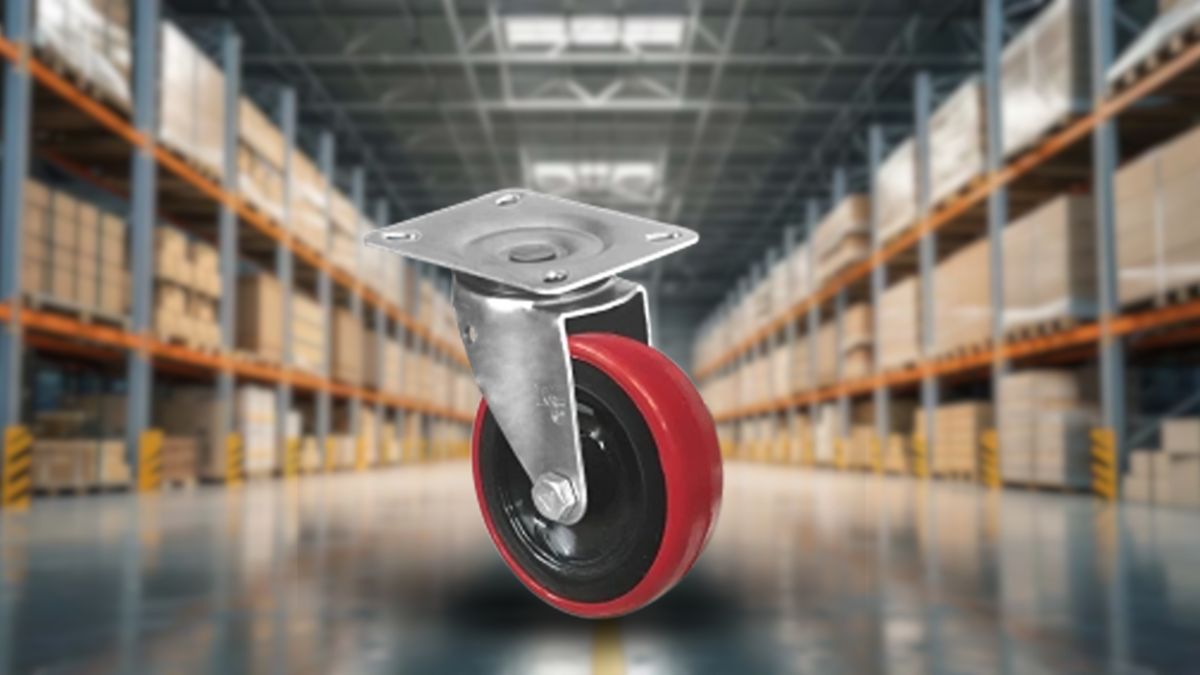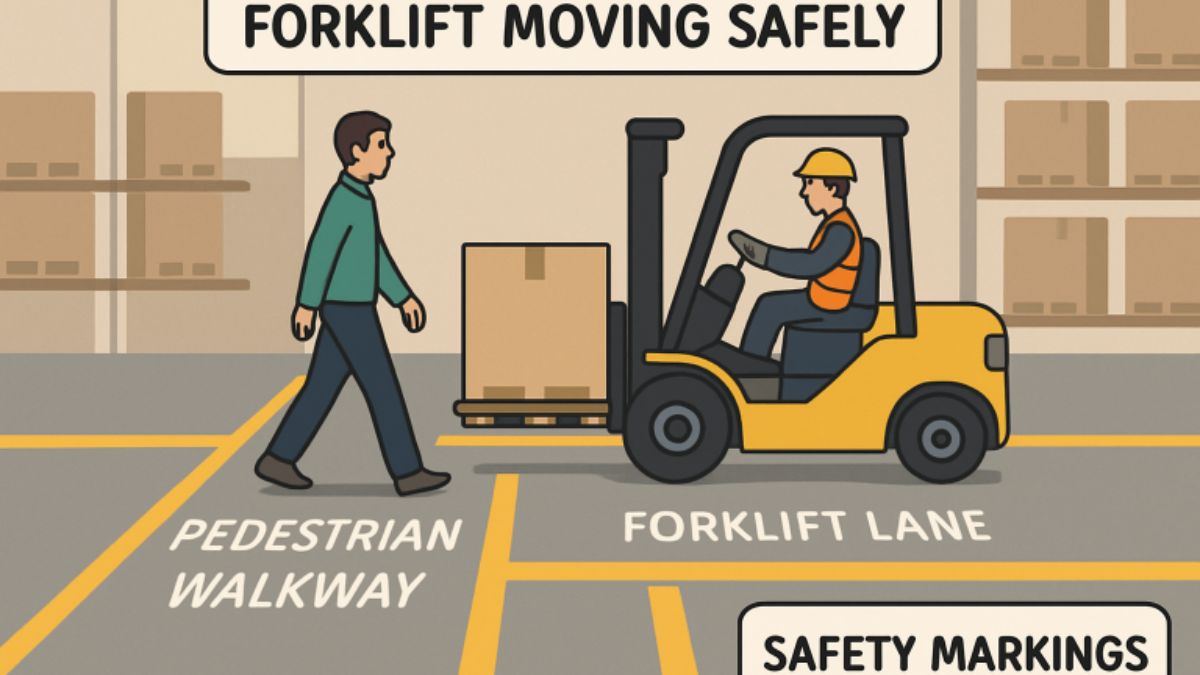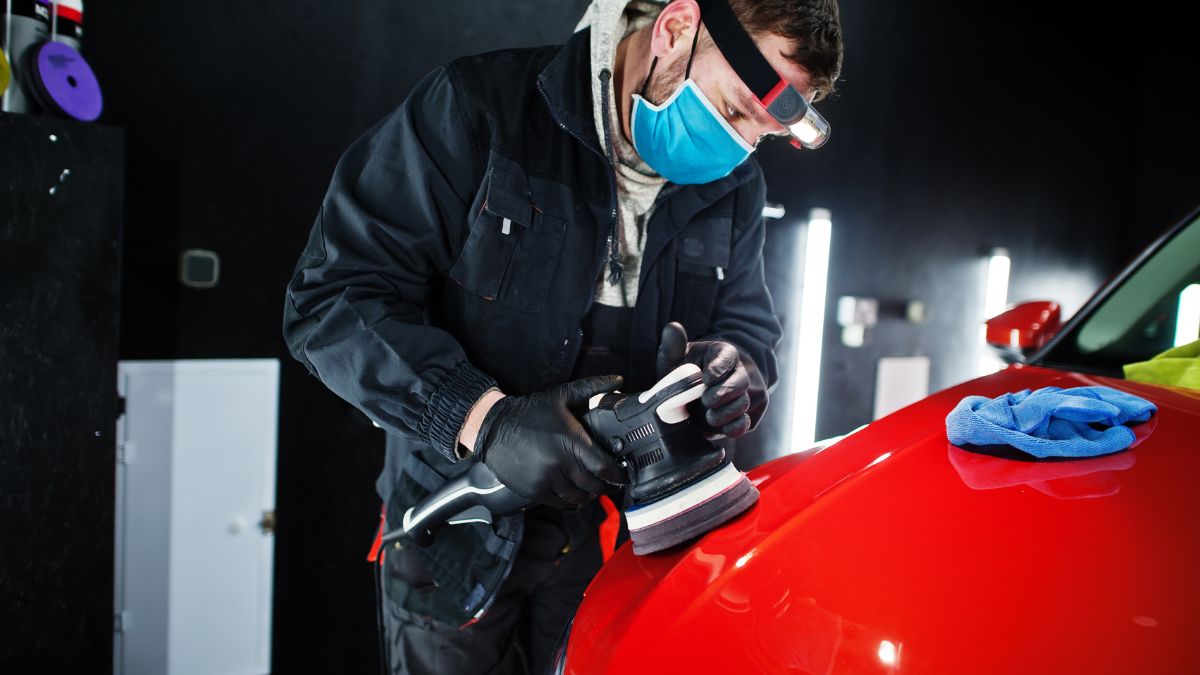topic
The Role of Castors and Wheels in Industrial Efficiency and Safety

Introduction to Industrial Castors and Wheels
The seamless movement of materials and equipment is crucial in the bustling environment of industrial operations. Industrial castors and wheels play an unheralded yet pivotal role in maintaining this operational flow. They transform how heavy machinery and goods are maneuvered, drastically reducing downtime and labor expenses. Among the myriad of castors available, suspension casters stand out. These specialized wheels are intricately designed to absorb shocks and significantly reduce vibrations. This enhances operational efficiency and ensures a safer working environment by minimizing strains and potential injuries associated with handling vibrations.
Types of Industrial Castors and Wheels
Industrial efficiency demands a keen understanding of the types of castors and wheels available, each tailored to specific needs. Swivel castors are engineered for agility, providing easy directional changes immensely beneficial in confined spaces. On the other hand, rigid castors prioritize stability, facilitating straight-line movement for hefty loads. Dual wheels are a game-changer as they effectively distribute weight over a larger surface area, thereby increasing load capacity and preventing damage to the flooring from concentrated pressure. This diverse functionality makes castors and wheels indispensable in various industrial sectors, from warehouses to manufacturing plants.
Material Considerations
Material selection is a key element in influencing the longevity and usefulness of castors and wheels. Polyurethane wheels, known for their high resistance to wear and tear, are versatile across numerous surfaces while maintaining a silent operation. Rubber wheels offer excellent traction and cushion, making them perfect for delicate flooring and environments where noise reduction is a priority. While not as common due to higher noise levels, metal wheels provide unmatched durability and are apt for extreme weight capacities. Each material offers unique benefits, making it essential to align the material choice with specific operational needs for optimal performance.
Selecting the Right Castors and Wheels
Selecting the appropriate castor or wheel is a nuanced process that requires assessment of load capacities, environmental conditions, and required mobility. For instance, operations involving heavy loads requiring smooth transit benefit from more complex wheel materials on surfaces. Conversely, uneven terrain mandates softer wheels that can grip and cushion effectively. The right choice of castor not only enhances operational flow but also elevates safety standards within the workplace, thereby reducing the risk of accidents caused by equipment failure or poor handling.
Maintenance Tips for Optimal Performance
Castors and wheels require routine maintenance to maintain their functionality and increase their lifespan. This involves consistent wear and tear inspection, ensuring well-lubricated bearings, and maintaining proper alignment. Such maintenance can prevent equipment failure in environments where heavy-duty operations are prevalent, thereby saving time and reducing maintenance costs. Early detection of minor issues allows for prompt rectification, thus forestalling more significant problems that could disrupt operational efficiency.
Innovations in Castor and Wheel Technology
The realm of industrial mobility solutions is embracing innovative advancements that elevate performance and safety. Ergonomic designs are increasingly becoming the standard, mitigating operator strain and enhancing maneuverability. Integrating innovative technology into wheel systems introduces automated features that facilitate precision movement and load management. Furthermore, advancements in materials science are bringing about composites and polymers that bolster wheel durability and effectiveness, signaling a significant leap in industrial applications.
Real-Life Applications and Case Studies
Understanding the power of castors and wheels is best depicted through real-world applications and case studies. Implementing advanced wheel technologies in logistics centers has led to remarkable reductions in operational delays, ensuring swift transit of goods across facilities. Integrating strategically selected castors and wheels in manufacturing units has improved productivity and fostered higher safety standards, minimizing workplace accidents. These applications underscore the transformative impact of tailored mobility solutions in diverse industrial scenarios.
The Future of Industrial Mobility
The landscape of industrial operations continues to evolve, with prospects pointing towards greater automation and technological integration. Mobility solutions are poised to adopt automated systems and innovative technologies, providing enhanced control and efficiency. Although understated, the overarching role of castors and wheels remains crucial as industries strive for optimized movement and improved safety. As innovations progress, the future of industrial mobility promises refined efficiency and precision and a substantial reduction in workplace hazards.
topic
How Flowers Can Improve Your Home Environment

Bringing flowers into your home is more than just a way to decorate. It’s a way to bring beauty and warmth into your space. It can positively influence your mood, health, and even the natural world outside your window. By simply adding fresh blooms to your living spaces, you unlock an array of benefits. Whether you want to create a peaceful retreat, encourage creativity, or help support local ecosystems, a floral touch can transform every corner of your house. You can easily order flowers online Boston, MA to refresh your interiors and begin enjoying these advantages right away.
Not only do flowers add color and beauty, but they also purify the air, create a calming environment, and may promote more restful sleep. Scientific research suggests that having fresh flowers at home can promote feelings of well-being, reduce anxiety levels, and enhance overall happiness. This holistic approach to home improvement is accessible to everyone, regardless of home size or style. Read on to explore how flowers uplift and improve your living environment in many surprising ways.
Mental Health Benefits
Flowers possess the unique ability to influence our mental and emotional states positively. Their presence can alleviate stress and lift spirits, as studies have demonstrated that people exposed to flowers in their living environments report increased satisfaction and positivity. Colors play an important role: bright, warm hues like yellows and oranges can energize, while cool blues and purples have a soothing effect. The act of arranging flowers or simply tending to a small bouquet can serve as a mindful ritual that enhances emotional resilience and helps combat daily stressors.
Air Quality Improvement
Many common flowers, in addition to their beauty, can greatly improve indoor air quality. Varieties like peace lilies, chrysanthemums, and gerbera daisies help filter the air by removing toxins such as formaldehyde, benzene, and trichloroethylene. This natural purification process results in a fresher, healthier home, especially important if you live in an urban area or keep your windows closed for much of the year. While flowers should not be used as a substitute for dedicated air purifiers, their natural filtering abilities complement other efforts to maintain a clean and breathable indoor environment.
Enhancing Focus and Productivity
Flowers can also contribute to better mental performance, especially in work-from-home or study settings. Research has found that people working in environments enhanced with flowers and greenery exhibit higher concentration, reduced mental fatigue, and increased creativity. The textures and colors of fresh flowers stimulate the senses, which can help signal to the brain that it’s time to focus. Keeping a small vase of fresh flowers on your desk or in your home office may give you the boost you need to perform at your best.
Promoting Better Sleep
Sleep disturbances are a common problem in many households. Incorporating certain fragrant flowers, such as lavender, jasmine, and gardenia, into your bedroom setup offers a natural solution. Their gentle scents have been shown to lower heart rate, ease anxiety, and promote deeper relaxation. As a result, these flowers can help establish a calming bedtime ritual for both children and adults, leading to more restful nights and more energetic mornings.
Supporting Pollinators and Biodiversity
If you have the space to arrange flowers outside or cultivate a home garden, you’re also providing essential habitat for pollinators like bees, butterflies, and hummingbirds. Native flowers, in particular, provide vital food sources for these hardworking insects and birds, helping to maintain healthy local ecosystems. Even indoor flowers, when sourced responsibly or grown from bulbs, support these environmental goals by reducing the demand for chemical-laden, non-native floral varieties that can harm biodiversity. Encouraging pollinator activity can have a ripple effect for the broader ecological community as well.
Creating Aesthetic Appeal
Few decor elements can match the visual impact of flowers. Whether you choose to display a single stem in a minimalist vase or craft elaborate arrangements, flowers bring vitality and freshness to any space. They serve as natural focal points, complement color schemes, and can even be arranged to evoke different moods throughout the year. Rotating varieties seasonally keeps the look fresh and showcases the best blooms each time of year. Flowers are also ideal for small spaces, as even a petite arrangement can make a significant design statement.
Choosing the Right Flowers for Your Home
To fully reap the benefits of flowers at home, consider lighting, climate, and maintenance needs. For low-maintenance options, try peace lilies, anthuriums, or even succulents, which require minimal watering. If sustainability is important, look for flowers that are locally grown and in season to reduce your environmental impact and support neighborhood florists. Finally, select varieties that match your preferred look and scent—whether you love bold peonies or subtle daisies, there’s a perfect flower for every lifestyle and decor style.
Final Thoughts
Incorporating flowers into your home offers more than a simple decorative boost—they can uplift your mood, refresh your air, help you work and sleep better, and support the environment. By consciously selecting and caring for flowers in your personal spaces, you invest in both personal wellness and the broader world around you. Experiment with different arrangements and varieties to discover how much brighter, healthier, and more inviting your home can become.
topic
Essential Forklift Safety Practices for a Secure Workplace

Creating a secure and compliant workplace begins with diligent safety procedures, especially around heavy machinery, such as forklifts. Forklift accidents can lead to severe injuries, property damage, or downtime, making safety an absolute priority. To mitigate risks and cultivate a culture of well-being, comprehensive safety protocols must be integrated into daily operations. Investing in onsite forklift training and certification not only ensures compliance but equips operators with the real-world skills they need for safe and efficient performance, strengthening your entire safety program from the ground up.
Well-trained forklift operators and vigilant maintenance practices form the backbone of workplace safety compliance. Implementing clear communication strategies and structured emergency response plans are additional layers that protect staff, inventory, and equipment. Moreover, staying current with evolving technologies and regulations reinforces a proactive approach that consistently aims to minimize hazards and improve productivity. By weaving safety into every aspect of forklift operations, organizations lay the groundwork for both short- and long-term success.
Comprehensive Operator Training
Forklift operator training stands as the most critical aspect of safety. All operators should receive formal instruction by qualified trainers on the specific equipment they will handle, including hands-on practical evaluation. Robust training includes instruction on potential hazards, avoidance and maneuvering techniques, load handling, safe operating speeds, and emergency shutdown procedures. According to the Occupational Safety and Health Administration (OSHA), employers are required by law to certify that operators are both trained and competent.
Regular Equipment Inspections
Consistent and thorough equipment inspections are a non-negotiable element of safety strategy. Before every shift or use, operators should inspect forklifts for signs of wear, leaks, or damage, especially in areas such as brakes, steering, tires, controls, and warning devices. Any malfunction must be reported, and defective machines should be taken out of circulation immediately until they are fixed. Routine preventative maintenance reduces downtime while boosting employee confidence in their tools. This diligent approach also helps prevent catastrophic equipment failures and unexpected costs.
Maintaining a Safe Workplace Environment
The design of your facility significantly impacts forklift safety. Establishing clearly marked pedestrian walkways, one-way lanes for forklifts, and highly visible signage creates a predictable flow of movement, reducing the risk of collisions. Adding mirrors at blind spots and ensuring high-intensity lighting in all operational areas can further decrease hazards. Companies must enforce clean, dry floors and hold supervisors accountable for prompt maintenance corrections, as even minor spills or debris can lead to slip-and-fall accidents or tip-overs during tight maneuvers.
Adopting best practices in warehouse logistics, drawing inspiration from established standards, helps organizations create safe workspaces for both operators and pedestrians. Major industry resources, such as those offered by Safety+Health Magazine, provide evidence-based approaches to improving layout designs and operational discipline that have been proven to reduce incidents and claims.
Proper Load Handling Techniques
Forklift stability is closely tied to correct load handling. Operators must know the rated load capacity and stability triangle for each machine—a key factor in preventing tip-overs. Loads should never exceed the maximum capacity and must be balanced and securely fastened before movement. Elevating loads only as much as necessary and avoiding sudden stops or sharp turns with raised forks will maintain stability. Operators should also be trained to assess the load’s weight, size, and center of gravity, ensuring that everything is within the forklift’s operational range for height and reach.
Leveraging Technological Advancements
Innovations in workplace safety are rapidly changing forklift operations. Modern forklifts can be equipped with wireless impact sensors that monitor collisions and unsafe driving patterns in real-time. These intelligent systems can alert supervisors to issues, trigger immediate interventions, and provide data for ongoing operator improvement. Anti-collision alarms, proximity sensors, and guided navigation features further decrease the risk of human error. Research published by industry leaders shows that technology-driven safety features have a measurable impact on reducing workplace accidents and boosting warehouse productivity.
Emergency Preparedness and Response
An effective emergency preparedness plan is essential in every facility where forklifts operate. This includes training employees on evacuation routes, handling overturned vehicles, managing chemical spills, and providing access to first aid supplies. Holding scheduled emergency response drills ensures that everyone clearly understands their roles and responsibilities, leading to swift and organized action in the event of an incident. Businesses need to coordinate with local authorities and integrate feedback from regular drills for continuous improvement.
Continuous Improvement and Safety Culture
Safety is not a one-time achievement, but a culture of continuous evaluation and growth. Encouraging the reporting of near-misses and safety concerns without fear of reprisal enables organizations to address hazards before they escalate into accidents. Regular safety meetings, anonymous suggestion systems, and ongoing education keep safety fresh and top-of-mind. Conducting periodic audits and acting on employees’ input ensures that safety protocols remain relevant as operations grow and change. Companies that consistently invest in safety foster loyalty, boost morale, and enjoy a stronger reputation both internally and with clients.
Integrating these key forklift safety practices will pave the way for a workplace that values employee health, meets regulatory standards, and maintains high productivity levels—ensuring long-term security and operational success.
topic
How Premium Paint Protection Film Installation Can Safeguard Your Vehicle’s Finish

What Is Paint Protection Film and Why Does It Matter?
Keeping a car’s exterior flawless can feel like a losing battle, especially with hazards lurking on every drive. From tiny gravel kicked up at highway speeds to sticky tree sap in your favorite parking spot and relentless sun fading affecting the paint, there’s a long list of things working against your car’s finish each day. Premium paint protection film, known as PPF by car enthusiasts, is a formidable, transparent barrier to all these real-world threats. It’s formulated to defend against scratches, chips, swirl marks, and environmental contaminants that ordinary wax or polish can’t repel alone.
Integrating a product like Paint Protection Film San Jose CA is more than a cosmetic improvement—it’s a long-term investment in keeping your vehicle looking new. Over the years, PPF has moved well beyond its roots in military and motorsport applications. Modern films are flexible, crystal-clear, and highly durable. According to independent assessments such as the paint protection film review by Consumer Reports, today’s PPF technology excels in longevity and protection. The science behind these films involves advanced polymers engineered to withstand UV exposure and resist discoloration, which helps demystify why PPF has become so popular with everyday drivers and automotive collectors alike. With the proper installation, this innovative material can preserve the aesthetic and value of virtually any car for years.
Benefits of Professional Installation Over DIY Kits
While the allure of saving money with a DIY paint protection film kit is understandable, there’s no substitute for skill and experience when it comes to achieving flawless protection. Professional installers dedicate their craft to understanding every vehicle’s curve, contour, and edge. They use precision-cut templates to fit each car model’s exact shape, ensuring the film lies perfectly without wrinkles, stretch marks, or unsightly bubbles. This high level of detail means less waste, a more uniform appearance, and better coverage for high-impact areas like hoods, fenders, door cups, and bumpers.
Certified installers utilize specialized tools and techniques to manage edges and seams so the film is nearly invisible. Most reputable shops also offer warranties for film and labor, protecting your investment against unexpected issues such as lifting or premature wear. Attempting a DIY install can be risky—misapplied film is often hard to reposition, leading to creases, trapped debris, and eventual peeling. Besides, DIY kits rarely match the clarity or durability of top professional-grade products. In the long run, skilled installation saves both time and headaches, giving your car’s finish the best possible defense and a pristine look.
Long-Term Value: Is Paint Protection Film Worth the Investment?
There’s no denying that premium paint protection film represents a sizable initial spend, but the long-term savings it delivers can often surprise first-time users. Instead of continually paying for paint correction, touch-ups, or even complete repaints, drivers with PPF find a significant reduction in these expenses. Every ding and chip deflected by the film saves money and frustration compared to traditional detailing.
Vehicles preserved with quality PPF frequently command higher resale values, as buyers notice and value a flawless exterior. Marketplaces and dealerships often highlight cars with professionally protected finishes, considering them well-maintained and worth more than comparable models with noticeable wear, and investigations, such as whether paint protection film works. Segment by Autoblog reveals that PPF provides legitimate, tested benefits on new and older cars. By keeping damage at bay, paint protection film can end up paying for itself. For drivers investing in luxury vehicles or just wanting peace of mind, it’s an advantage that extends well beyond aesthetics.
Best Practices for Maintaining Your Paint Protection Film
Caring for your PPF means adopting a few practical habits to maximize its life and performance. Always choose soft microfiber towels and a pH-neutral car wash soap to prevent surface abrasion. Avoid holding pressure washers too close to the film’s edge, and never use harsh chemicals for stubborn bugs or brake dust. By making car washing a regular habit—ideally every two weeks, and more often after driving through salted roads, pollen, or heavy rain—you’ll fend off potential contaminants that might dull the film’s finish.
Inspect the PPF monthly for signs of lifting or bubbling, especially along high-contact edges like door seams and wheel arches. If you spot issues, consult your installer promptly; minor problems are much easier to address early on. Don’t forget to dry your vehicle thoroughly to prevent hard water spots. Premium PPF can maintain its crystal clarity and protective qualities for years, allowing the original paint to age gracefully underneath.
How PPF Fits Into a Complete Auto Care Routine
Paint protection film operates at its full potential when paired with other thoughtful car care practices. Many opt to apply ceramic coatings over the film, which adds a slick top layer to repel dirt and enhance water beading even further. This creates a highly effective, two-layer system where the PPF blocks physical damage while the ceramic layer keeps the surface even easier to clean. Some drivers still enjoy a traditional wax routine, which can complement PPF as long as the waxes are compatible and do not leave residue.
Consider scheduling professional detailing twice a year to remove any pollutants that accumulate along the film’s edges, and prioritize extra attention to trouble spots during high-salt or pollen seasons. Layering innovative protective strategies means it looks stunning but stands up to the wear and tear of everyday driving, regardless of climate or mileage. This comprehensive approach pays off for owners who want the best for their investment, merging practicality with pride of ownership.
Frequently Asked Questions About Paint Protection Film
Will PPF Yellow or Crack Over Time?
Leading manufacturers have resolved issues with yellowing by using UV-resistant polymers. However, selecting a reputable brand and certified installer is crucial. When cared for properly, most modern PPFs will last several years without discoloring or cracking, even under direct sunlight.
Can PPF Be Removed Without Damaging the Paint?
Absolutely. Professional removal ensures the film peels away safely, eliminating residual adhesive. The paint underneath is typically as pristine as the day it was covered, assuming proper application and removal methods.
Is the Film Compatible with Wax or Coatings?
Modern PPF is generally designed to work with compatible waxes and ceramic coatings. Just be sure any products used are formulated for film and avoid abrasive compounds that might dull the finish or cause haze.
How Long Does Installation Take?
A standard full-vehicle installation can range from one to three days, depending on the complexity of the job and the coverage area chosen. Specialty vehicles or requests for extra protection on certain panels may extend this window slightly.
Final Thoughts: Deciding If Paint Protection Film Is Right for Your Vehicle
Premium paint protection film is more than just an aesthetic upgrade—it’s a proactive step thousands of drivers have taken to preserve the look and value of their vehicles. Whether you use your car as a daily commuter, road-trip adventurer, or weekend showstopper, PPF assures that minor hazards won’t leave a lasting mark. A combination of high-tech materials, professional expertise, and regular maintenance will keep your vehicle looking sharp despite the unpredictable conditions of modern roads.
If you’re considering PPF, weigh the up-front investment against the tangible long-term benefits: less time worrying about repairs, greater resale value, and the satisfaction of a vehicle that turns heads every day. In today’s world—where first impressions and lasting durability matter—premium PPF installation is a practical, proven option backed by industry data and real-world experience.
-

 GENERAL12 months ago
GENERAL12 months agoFrom Fan Art to Original Works: The Diversity of doujindesu Creations
-

 Entertainment8 months ago
Entertainment8 months agoEnchantment & Excitement: Crafting Unforgettable Event Experiences
-

 GENERAL9 months ago
GENERAL9 months agoEngland Business Visa Requirements for American and International Citizens in 2025: A Guide for Entrepreneurs
-

 GENERAL8 months ago
GENERAL8 months agoCrossword Conundrum: The Significance of vault opener nyt crossword
-

 GENERAL11 months ago
GENERAL11 months agoLatest Trends in Men’s and Women’s Jackets for the Upcoming Season
-

 GENERAL8 months ago
GENERAL8 months agoExploring the World of nhentai.nef: A Comprehensive Guide for New Users
-

 Health12 months ago
Health12 months agoDiscovering gel ooru: The Ultimate Guide to This Unique Traditional Craft
-

 GENERAL1 year ago
GENERAL1 year agoWhy raterpoint is Revolutionizing Customer Feedback
